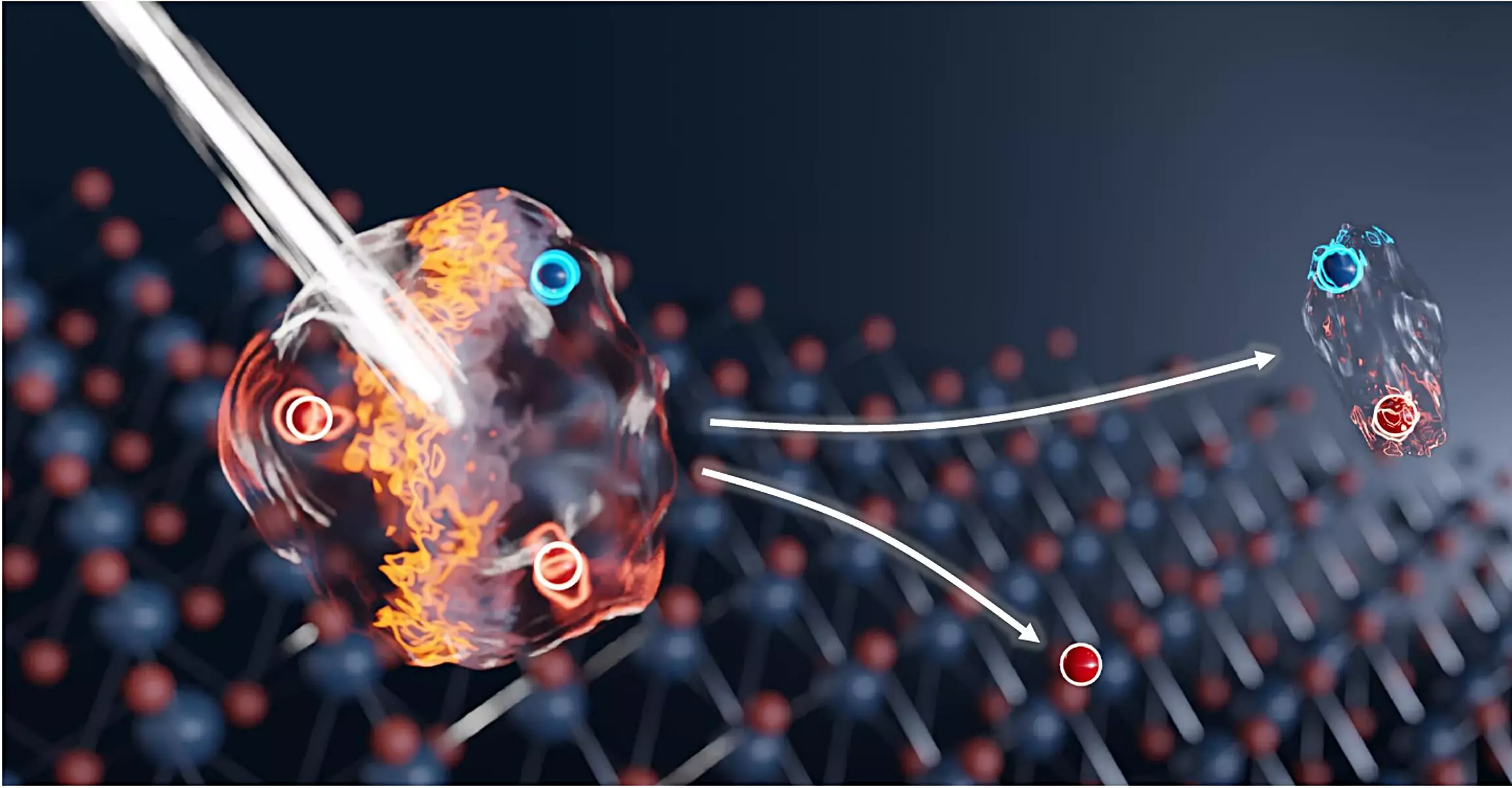In the rapidly advancing field of materials science, two-dimensional materials have emerged as a frontier of exploration, pushing the boundaries of electronics and quantum technologies. The ability to manipulate materials as thin as a couple of atomic layers opens up vast opportunities for innovative applications. This article delves into the significant advancements made by a team led by researchers from TU Dresden in harnessing these ultrathin materials for optical data processing and flexible detection technologies, a breakthrough encapsulated in their recent study published in *Nature Photonics*.
The study particularly focuses on a groundbreaking experiment conducted at the Helmholtz-Zentrum Dresden-Rossendorf (HZDR) that has made strides in achieving fast switching processes between distinct states of luminescent particles. Unlike traditional bulk materials, two-dimensional semiconductors exhibit unique properties, notably the ease of exciton generation. Excitons form when excited electrons leave behind positive charge holes, subsequently binding to create a stable electronic pair. This mechanism becomes even more intriguing with the formation of trions, where an additional electron combines with the exciton to create a new particle state.
Historically, the switching dynamics between excitons and trions have been recognized for their potential applications, yet significant limitations in switching speeds have constrained advancements. The research team, led by Professor Alexey Chernikov and aided by Dr. Stephan Winnerl from HZDR, has achieved an astonishing acceleration in this switching process, demonstrating speeds that outstrip previous methodologies by nearly a factor of one thousand.
The success of this research was grounded in the innovative use of terahertz pulses generated by the FELBE free-electron laser. This unique approach provided intense bursts of energy precisely tailored for breaking the weak bonds between excitons and electrons at cryogenic temperatures. By directing short laser pulses at an atomically thin layer of molybdenum diselenide, the team was able to excite the material and generate excitons effectively. The experiment demonstrated that once these excitons were formed, they swiftly transitioned into trions through electron capture.
The real breakthrough came when the team employed terahertz radiation to facilitate rapid switching back from trions to excitons. This was characterized by the emission of near-infrared radiation at distinct wavelengths, enabling the researchers to intuitively track the particle state transformations. The ability to swap between these states at record speeds—on the order of picoseconds—marks a pivotal advancement for future research in this domain.
The implications of this discovery are profound, suggesting a variety of potential applications across multiple fields. For one, the accelerated switching processes might lead to novel types of optical modulators capable of rapid on-off cycling. Such devices could be essential in communications or data processing systems, where fast electronic control of optical signals is paramount.
Furthermore, the research teases the possibility of developing advanced sensors and imaging technologies. With their findings, the team implies that a new generation of terahertz detectors could emerge, allowing for adjustable frequency detection capabilities. These detectors, even at low intensity levels, could be realized as high-resolution cameras capable of producing detailed images from terahertz radiation—potentially revolutionizing fields such as material characterization and medical imaging.
One of the noteworthy insights from the study is the potential for extending the demonstrated switching dynamics to various complex electronic states and materials. The researchers suggest that exploring interactions in higher-dimensional quantum materials could provide new horizons for scientific inquiry.
Ultimately, the work proposed by the TU Dresden team paves the way for further exploration into the quantum states of matter, which often arise from the intricate interactions among many particles. As researchers build on this foundation, they could unlock new methods for controlling and manipulating light and electron interactions, leading to unprecedented advancements in technology.
The path paved by the breakthroughs in quantum material research, particularly in the realm of two-dimensional semiconductors, holds immense promise for the future of electronics. As the scientific community delves deeper into these findings and their applications, we may soon witness a transformative era in optical devices, sensor technology, and advanced imaging systems. The intersection of rapidly switching excitons and trions in these ultrathin materials stands to redefine our understanding of quantum mechanics and technological applications in the 21st century.


Leave a Reply